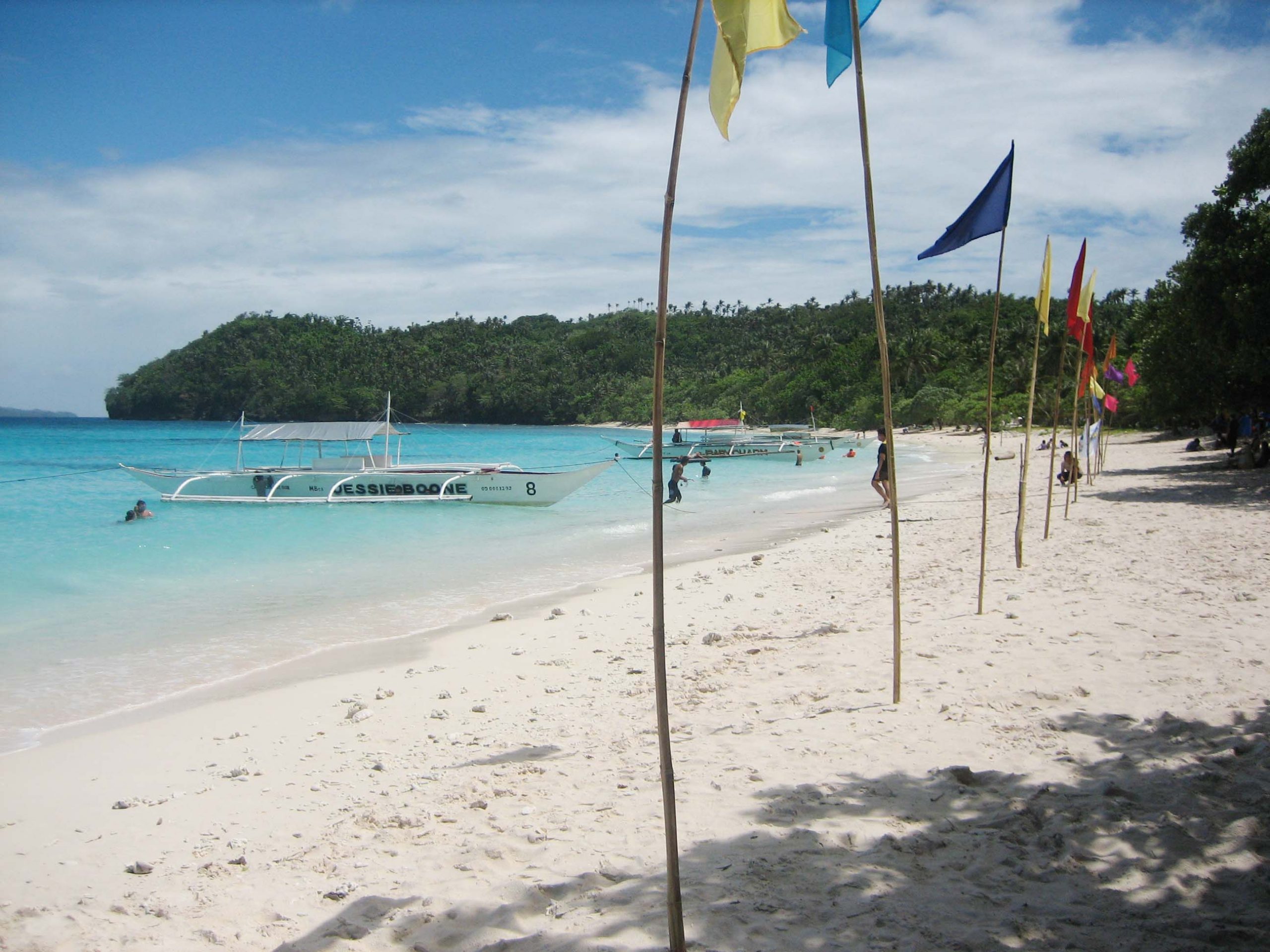Ever since I heard of whale shark sightings (Rhincodon typus) in Donsol, Sorsogon, I have been planning to see these giant creatures myself.
Whale sharks, also known as butanding, is considered the biggest fish in the world. It is also included in the World Wildlife Fund’s list of endangered species.
It can measure up to 18 meters long and weigh up to 40 tons. It can live up to 100 years. In spite of its size, these giant creatures only feed on plankton, krill, small fish, squid and invertebrate larvae.
They migrate to different parts of the world where food is abundant during different months of the year. They have been seen in Australia and far away South Africa.
In Donsol, butanding sightings are prevalent from January to May, with its peak in March and April. It was in the 1990s when the Department of Tourism started promoting whale shark eco-tourism and interaction for tourists. Scientists and conservationists have also flocked to Donsol to further study these animals.
Hot ice cream
Our tour of Sorsogon began with an hour’s plane ride from Manila to Legazpi, Albay. Our group of five was met by our nephew, Gerie Li, who had invited and arranged this trip for us.
He took us to 1st Colonial Grill barbeque restaurant for lunch and encouraged us to try the sili ice cream. Yes, it is hot ice cream. I immediately fell in love with it.
We then headed south passing the well-paved, winding mountainous road to Donsol. This town has another attraction: firefly watching.
Tip: Don’t go there when there is a full moon. On those nights, the moon is so bright one cannot see clearly the faint pinprick lights of the fireflies.
A boat took us to the wide and calm Donsol River. After several minutes of paddling in total darkness, our guide would direct our attention to a distant shrub or tree which looked lighted by tiny LED lights but were actually thousands of fireflies swarming around the tree.
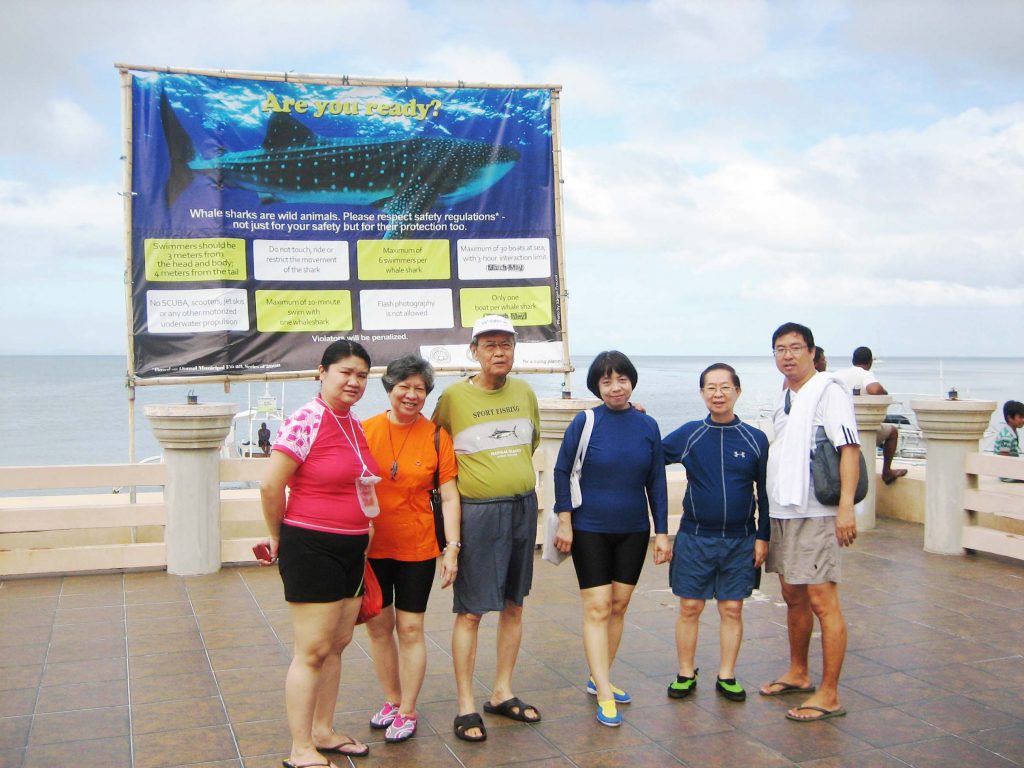
Female fireflies cannot fly, they perch on the branches waiting for the males. Once a male finds a mate, their two lights will be synchronized.
Tourists are advised not to use flash photography.
The next morning, we had an early breakfast and went straight to the butanding visitor center to register and log for our whale shark interactive tour.
All tourists are required to attend the orientation before heading out to sea. There are rules and regulations for interacting with the butanding: no feeding, no touching or riding, do not restrict or block the natural path of the butanding, no flash underwater photography, no scuba or any motorized underwater propulsion, only one boat and maximum of six swimmers per butanding who should stay three meters away at all times.
The six passengers are accompanied by one boat crew, one or two spotters and a butanding interaction officer. Our BIO, a middle-aged man named June, told us that he was only 10 years old when he sighted his first butanding.
He instructed those who wanted to jump into the water for the butanding interaction. I for one was not contented with just watching the butanding from the boat. Geared with a life vest, mask and snorkel, I was eager to have a closer look at these gentle giants.
After approximately 45 minutes of cruising in the open sea, the spotter saw one. I saw a dark shadow with white spots swimming near our boat. We were excited because we had been told that there is no guarantee that every boat will see one.
My niece, Aileen Yee, and I began positioning at the edge of the boat for jumping. When the BIO says “jump,” you should jump at once, otherwise you’ll miss the chance of seeing it. Because of the waves, water got inside my snorkel and I gulped a mouthful of sea water.
I later joked that the butanding shared its meal of plankton with me.
Just as I was re-adjusting my snorkel, June shouted “look down.” Lo and behold! I saw the gentle giant gliding by slowly around three meters below.

I could see clearly its broad flat head, huge wide mouth and the checkerboard pattern of white spots and stripes on its blue-gray-brown-skin.
Its mouth can be as wide as two meters and lined with thousands of tiny teeth, which are neither used for chewing nor biting. They swallow large amounts of water and filter the food in their gill rakers. Water is released through the gill slits. It is said that each whale shark has its own unique checkerboard and spot pattern on its back.
We made two more sightings before returning to shore. I received a certificate of interaction from the office.
That was my best jump ever!
Back in Legazpi, we had buffet lunch at Waway’s Restaurant in Legazpi City.
Ester Yee, my sister-in-law who now lives in Manila, said she missed Waway’s native Bicolano food so much because she loved to eat there when she was young. This restaurant used to be a small carenderia 60 years ago.
A trip to Bicol won’t be complete without a photo stop at Cagsawa. Many local tourists there were posing in front of the famous Mayon Volcano and bell tower. Then we drove up Lignon Hills to enjoy its cool breeze and a 360-degree view of Legazpi City.
Bicol also boasts of its halo-halo. We tried DJC Halo Halo Restaurant’s house specialty: halo-halo, of course.

Everybody agreed the confection – cool and sweet – was really delicious. The ice is finely crushed for this refreshing, calorie-laden dish with its many ingredients – such as ube ice cream, ube, leche flan, mais, gulaman, mini sago, saba banana – and topped off with shredded strands of cheese. Surprisingly, it is not too sweet, and there is a generous amount of milk added to it.
Feast from pugon
Then we drove all the way to Bulan, Sorsogon, Gerie’s hometown. His wife Anita was waiting with a sumptuous home-cooked dinner.
The next morning, we were served homemade dried lapad (or flounder) for breakfast. I normally don’t like dried fish because it is too salty. But I consumed one whole lapad that morning. It was far too delicious: not salty, not bony and has a natural sweet aroma. Much better than the ones sold in the market. Bulan has a fishing port, thus the freshest fish and giant squids are abundant here.
Gerie owns a hardware store and his brother Ruben and sister Marilyn manage a grocery and bakery just across the street. Their bakery uses a traditional pugon (brick oven) which dates back to their grandfather’s time. It is said that bread baked in pugon has a peculiar aroma missing from the modern oven. The pugon was also used to roast lechon kawali which we tried later that night.
Pink sand
Next on our itinerary was an excursion to Subic Beach, Matnog, Sorsogon. The beach is on an island across Matnog and can only be reached by boat.
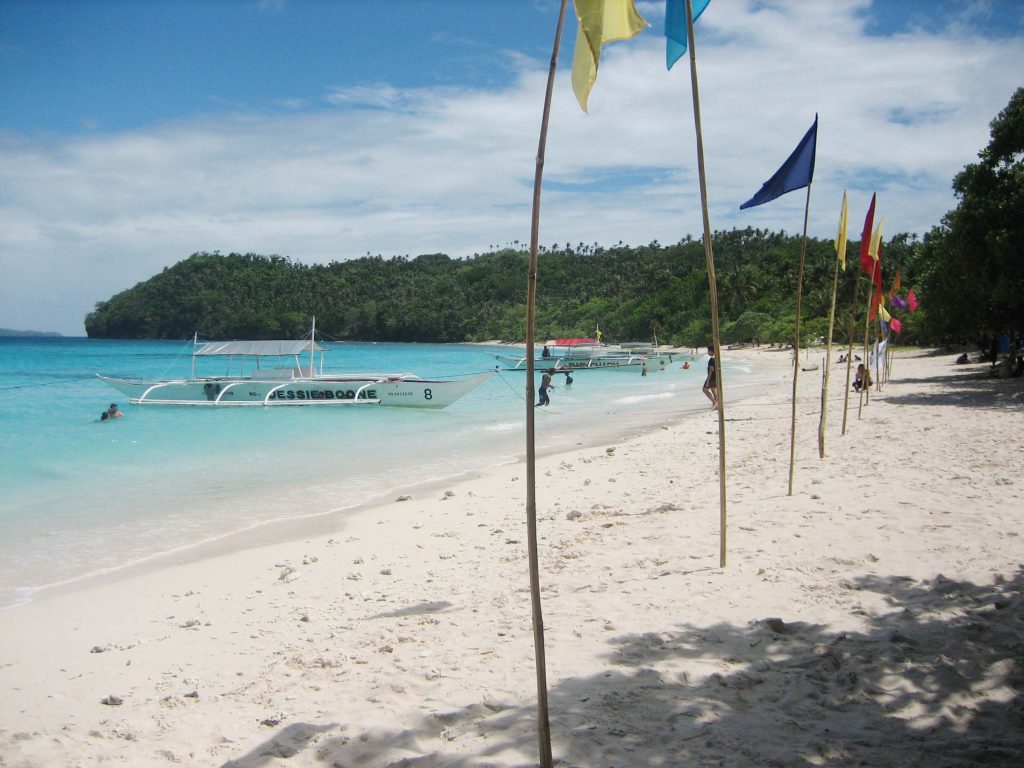
Known to only a few, this place is a beach lover’s paradise because the water here is crystal clear and the sands are pink in color – pink because the finely crushed red corals blended with the fine white sand.
Our nephews George and Tony Tan from Gubat, Sorsogon also came to join us. Aside from the food prepared by Anita, they brought a lot of specialty food from Gubat. We had lapu-lapu, grilled giant squid, adobo baby squid, pork barbeque, pako, coconut, watermelon and many others. It was more than we could consume.
The only shortcoming of this place is the lack of facilities. There was only one functional shower room for men and one for women. We had quite a long queue just to take a shower.
On the other end of the island is a fish sanctuary at Juag. Visitors can buy fish food and have fun feeding the marine life. Swimming with the fish was banned: in the past, a swimmer was bitten by a huge lapu-lapu.
Hot springs
After a day at the beach, our nephews wanted us to soak our tired bodies in the hot springs of San Benon at the San Benon Hot Spring Resort in Irosin, Sorsogon. Entrance fee is P35 per person by day, and P40 at night.
The place was very crowded when we got there. Luckily we were able to rent a table near the pool. One can choose from their three pools, hot, lukewarm and cold. Most of the elderly are soaking in the therapeutic hot pool.
We had another dinner feast of sumptuous food as Anita came to join us bearing more freshly home-cooked food.
The lechon kawali cooked in their pugon roaster was not oily and had crisp skin. My favorite was the pinangat, taro leaves cooked with coconut milk, dried fish, chili and meat, tied securely with coconut leaf. We also had ilog pili, young fresh pili nuts which were new to my tastebuds.
Volcano, lake, bee farm
Bulusan is famous for its volcano and lake, named after the town’s name. We headed to this small town and visited the Balay Buhay sa Uma Bee Farm. I took a closer look at the bee hives and found that they keep the tiny stingless bee or trigona. The place is well maintained and has cottages for rent.
We toured around the place and had lunch in a shaded open cottage. Tony brought lots of home cooked crabs and rock lobsters. Rock lobsters are cheaper in Gubat compared to Manila and is considered an exotic dish in some five-star hotels in Manila.
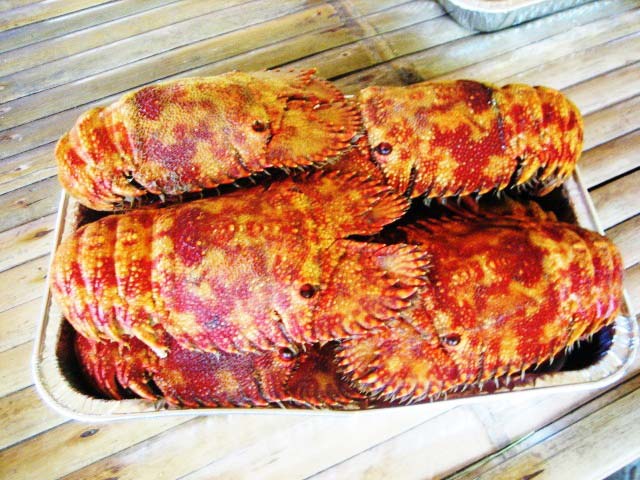
The crabs are from Prieto Diaz, a neighboring town of Gubat, which produces one of the best tasting crabs in the country. I also tried the binutong, a native delicacy made with glutinous rice, coconut cream, anise flavoring and salt.
Our next stop was Bulusan Lake. Visitors can hike around the lake, go kayaking, swim in the lake or simply enjoy its scenic view and count the number of eagles soaring above it.
After touring Bulusan Lake, we went trekking a nature’s path to see the Bayugin Falls. With three senior citizens in our group, I was a bit worried that they will have difficulty walking in the rugged and uneven trail.
But the villagers were very helpful, they lent them wooden canes and offered to escort them down the trail. I was amazed when my brother-in-law, Romeo Yee, already in his 70s, reached the falls first.
He later said his two able-bodied escorts sometimes lifted him when the roads were slippery. No wonder he was so fast!
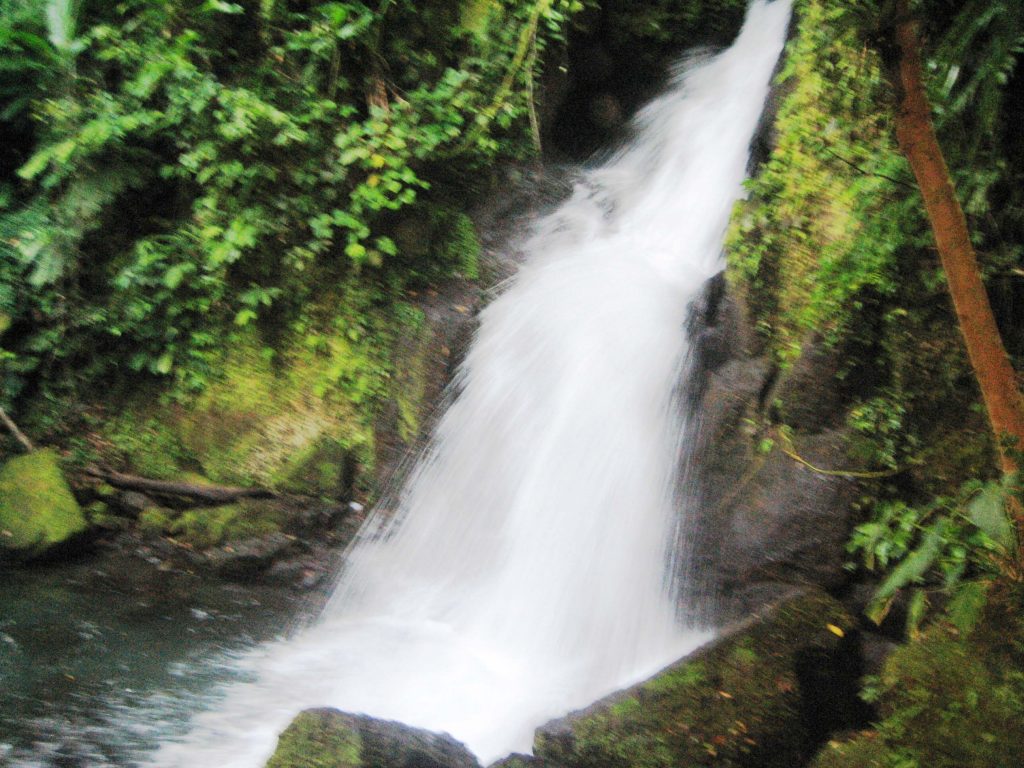
The view of the falls was worth the 30-minute trek. Standing on the bamboo bridge a distance from the falls, one can feel the cool mist coming from its thundering, cascading water. The more adventurous ones can also swim in the pool below. It was already getting dark so we hurriedly walked back to the village.
Childhood memories
That night, our group went to Gubat for dinner. Gubat is childhood home to my husband Salvador and his sister Ester.
My father-in-law started a small business there selling copra, abaca, rice, sugar and other local crops when he first came from China more than 90 years ago.
Today, the third generation continues to manage the business and converted the small store into a supermarket equipped with modern facilities such as bar code reader, checkout counter and close-circuit television monitors.
Our nephew, William Tan, was engrossed in his work when we entered his office. My husband, who last visited Gubat 20 years ago was so happy to see his nephews’ achievements.
Our sumptuous seafood dinner was prepared by the elderly househelper who has been with the family for more than 40 years. Salvador and Ester went through the rooms of their former home, which brought back nostalgic memories of their childhood days.
After dinner, we returned to Legazpi for the night there because we had a plane to catch to Manila the following day.
Progress has visited the Bicol region, particularly Sorsogon, since we last visited 20 years ago. The streets are well-paved and very clean. Local residents are polite and very hospitable. We enjoyed this trip very much and would definitely recommend it to friends.
It is indeed more fun in the Philippines! — First published in Tulay Fortnightly, Chinese-Filipino Digest 28, no. 1-2 (June 16-July 6, 2015): 24-26.
